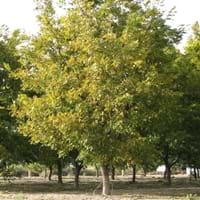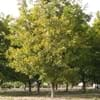Life Span
Perennial
Perennial
Type
Tree
Flowering Plants, Fruits, Trees
Origin
Southeastern United States, Central United States, South-Central United States, Mexico
Central Asia
Types
Elliot Pecan, Gafford Pecan
Aceymac apple, Bailey Sweet apple, Dabinett apple, Nehou apple
Habitat
Loamy soils, Moist woods, Tropical regions
Hillside
USDA Hardiness Zone
5-9
5-8
Sunset Zone
2b, 3a, 3b, 6, 7, 8, 9, 10, 12, 13, 14, 18, 19, 20
A1, A2, A3, 8, 9, 10, 11, 12, 13, 14, 15, 16, 17, 18, 19, 20, 21, 22, 23, 24
Habit
Upright/Erect
Oval or Rounded
Flower Color
Yellow, Green
White
Flower Color Modifier
Bicolor
Not Available
Fruit Color
Tan, Brown
Green, Red
Leaf Color in Spring
Green
Dark Green
Leaf Color in Summer
Green
Green
Leaf Color in Fall
Yellow
Brown, Green, Light Yellow
Leaf Color in Winter
Not Available
Not Available
Leaf Shape
Pinnate
Oblong
Plant Season
Spring, Summer, Fall
Spring
Sunlight
Full Sun
Full Sun, Partial shade
Growth Rate
Medium
Medium
The pH of Soil
Acidic, Neutral
Neutral
Soil Drainage
Well drained
Well drained
Bloom Time
Spring
Fall, Summer
Tolerances
Not Available
Drought
Where to Plant?
Ground
Ground
How to Plant?
Seedlings, Stem Planting
Grafting, Seedlings, Transplanting
Plant Maintenance
Medium
Medium
Watering Requirements
Requires watering in the growing season, Use Mulches to help prevent water loss during hot and windy weather, Water more in summer
Medium
In Summer
Lots of watering
Lots of watering
In Spring
Moderate
Moderate
In Winter
Average Water
Average Water
Soil pH
Acidic, Neutral
Neutral
Soil Drainage Capacity
Well drained
Well drained
Sun Exposure
Full Sun
Full Sun, Partial shade
Pruning
Cut upper 1/3 section when young to enhancegrowth, Remove dead branches
Prune when plant is dormant, Remove dead or diseased plant parts
Fertilizers
Apply 10-10-10 amount, Nitrogen, Zinc fertilizers
All-Purpose Liquid Fertilizer
Pests and Diseases
Crown rot, Leaf curl, Leaf spot, Red blotch, Snails, Squirrels
Aphids, Canker, Caterpillars, Powdery mildew, Root rot
Plant Tolerance
Heat Tolerance, Humidity, Shade areas, Soil Compaction
Drought
Flowers
Insignificant
Yes
Flower Petal Number
Not Available
Single
Foliage Texture
Medium
Medium
Foliage Sheen
Matte
Matte
Attracts
Birds, Deers, Squirrels
Birds
Allergy
Rhinitis, Sinuses
Mouth itching, Throat itching
Aesthetic Uses
Cottage Garden
Not Available
Beauty Benefits
Hair Conditioner, Making cosmetics, Reduce Bruises
Not Available
Environmental Uses
Air purification, Nesting sites for birds, Shadow Tree
Air purification
Medicinal Uses
Alzheimer’s Disease, Antidepressant, Anti-oxidant, Appetite enhancer, Cardiovascular problems, Detoxifies lever, Diabetes, Gallbladder Diseases, Gout, Strengthen gums, tuberculosis
Cancer, constipation, Diabetes, Diarrhea, Dysentry, Fever, Heart problems, Tooth ache
Part of Plant Used
Bark, Fruits
Fruits
Other Uses
Air freshner, Application in Furniture, used for making charcoal, Used in making musical instruments, Used in paper industry
Used As Food, Wood is used for making furniture
Used As Indoor Plant
No
No
Used As Outdoor Plant
Yes
Yes
Garden Design
Fruit / Fruit Tree, Shade Trees
Fruit / Fruit Tree, Shade Trees, Showy Tree
Botanical Name
CARYA illinoinensis
Malus domestica
Common Name
Papershell Pecan, Pecan
Apple Tree
In Hindi
पेकॉन
सेब का वृक्ष
In German
Pekannuss
Apfelbaum
In French
Pacanier
Pommier
In Spanish
Carya illinoinensis
Manzano
In Portuguese
Nogueira-pecã
Macieira
In Polish
Orzesznik jadalny
jabłoń
Phylum
Magnoliophyta
Magnoliophyta
Class
Magnoliopsida
Magnoliopsida
Order
Juglandales
Rosales
Family
Juglandaceae
Rosaceae
Clade
Angiosperms, Eudicots, Rosids
Angiosperms, Eudicots, Rosids
Tribe
Juglandeae
Not Available
Subfamily
Juglandoideae
Not Available
Number of Species
Not Available
Importance of Pecan and Apple Tree
Want to have the most appropriate plant for your garden? You might want to know the importance of Pecan and Apple Tree. Basically, these two plants vary in many aspects. Compare Pecan and Apple Tree as they differ in many characteristics such as their life, care, benefits, facts, etc. Every gardener must at least have the slightest clue about the plants he wants to plant in his garden. Compare their benefits, which differ in many ways like facts and uses. The medicinal use of Pecan is Alzheimer’s Disease, Antidepressant, Anti-oxidant, Appetite enhancer, Cardiovascular problems, Detoxifies lever, Diabetes, Gallbladder Diseases, Gout, Strengthen gums and tuberculosis whereas of Apple Tree is Cancer, constipation, Diabetes, Diarrhea, Dysentry, Fever, Heart problems and Tooth ache. Pecan has beauty benefits as follows: Hair Conditioner, Making cosmetics and Reduce Bruises while Apple Tree has beauty benefits as follows: Hair Conditioner, Making cosmetics and Reduce Bruises.
Compare Facts of Pecan vs Apple Tree
How to choose the best garden plant for your garden depending upon its facts? Here garden plant comparison will help you to solve this query. Compare the facts of Pecan vs Apple Tree and know which one to choose. As garden plants have benefits and other uses, allergy is also a major drawback of plants for some people. Allergic reactions of Pecan are Rhinitis and Sinuses whereas of Apple Tree have Mouth itching and Throat itching respectively. Having a fruit bearing plant in your garden can be a plus point of your garden. Pecan has no showy fruits and Apple Tree has showy fruits. Also Pecan is not flowering and Apple Tree is flowering. You can compare Pecan and Apple Tree facts and facts of other plants too.





